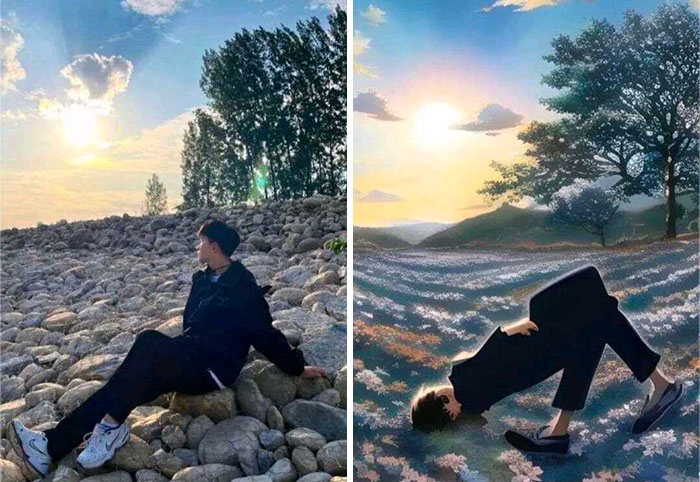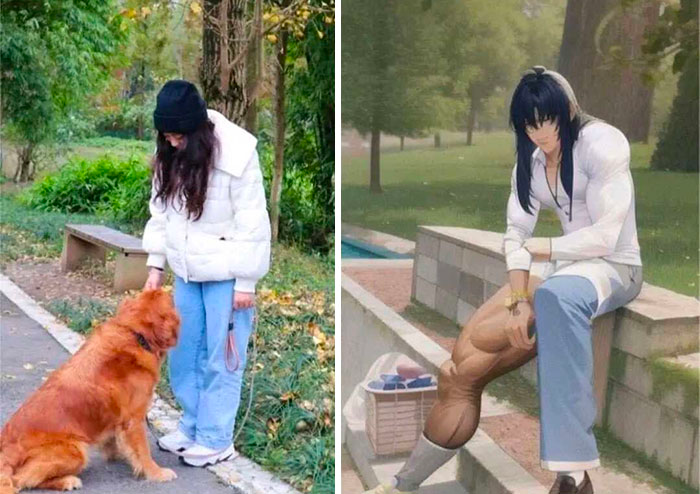AI vs Graphic Designers: What’s brewing?
by Munmun Aggarwal — Jul 6, 2023
Comms Ninja Munmun Aggarwal takes on AI generated images and the pitfalls of leaving it all to the machines.
Image Credit: Nick Easen; The image depicts how AI and Designers hand in hand conquer endlessly.
Worldwide, brands use visuals to convey their messages. Building designs that foster community and are important in the marketing industry. Up until recently, graphic design was a fundamental and dynamic ability that changed with each technological advancement. Artificial intelligence and machine learning are the most recent technological advances. It’s fascinating to learn all that this new technology is capable of, from self-driving cars to recommending our next Netflix binge. In the field of graphic design, it can effectively generate images, edit photos or churn out data to produce sample logos. Therefore, it should come as no surprise that talks of AI fully replacing the need for visual designers are brewing. Can it, though? (Put on our thinking cap)
Numerous AI programmes make use of free text-to-image generators. But one must keep in mind that it is simply a machine. For humans, it might produce endless work that can be repetitive and time-consuming, but only through the right prompts. The outcome will be messed up if the prompt isn’t explicit enough. You can wind up giving AI a far longer brief than a graphic designer would need, if you want to create the exact image you have in mind. And don’t we all know what a challenge we all face in briefing the designers in one go?


Image Credits: miu_23.6; Times when AI got majorly confused by people’s pictures, And generated hilarious results
AI-powered technologies can help designers stimulate and support human creativity by offering fresh viewpoints that people can adopt into their work. They can also gather enormous amounts of data, identify patterns, and assist researchers in learning more about their intended audience. AI, however, can never fully replace human originality and ingenuity. Additionally, it won’t have the cultural and emotional background that human designers have no trouble understanding.
Anyone in the graphic design field, for instance, has probably heard a customer say, “This design is missing something, but I’m not sure what.” The emotions behind this may be beyond the comprehension of AI, but a graphic designer can make satisfactory improvements.
“Designing is not a robotic language, but an emotive one.”
Brands that have successfully tapped into human emotion and personality include Amul, Nirma, Coca-Cola, MDH, and many others.
The quality control of AI art is another area where it may need to catch up. AI programmes can only identify faults in accordance with pre-established rules and guidelines. It is not a replacement for human judgement and expertise. It cannot replace the subjective and contextual judgement that human designers bring to the table. We are all aware of the numerous worries expressed about the need to license photos, as well as how difficult it may be to avoid plagiarism with AI.
None of these shortcomings precludes AI and ML from playing a significant role in the design process. These tools can undoubtedly increase the effectiveness and productivity of designers, but ‘real’ intelligence is always superior to ‘artificial’ intelligence. Let’s not forget it’s the humans who have built AI and not vice versa. The vastness of the human mind can simply not be matched by the machines.
Image credit: Munmun Aggarwal; Irrespective of how advanced AI becomes, the ultimate lead will be by humans, specifically the designers.




